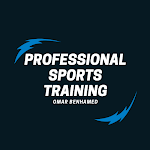Soccer Functional Fitness Training PDF
Young soccer players, coaches, and instructors often ask when they should introduce physical training in their soccer instruction,
how to integrate fitness or athletic training into soccer training, and which types of drills and games to use as a basis for training. Due to frequently limited training volume yet high competitive workload and demands,
particularly in amateur soccer, there is the additional issue ofplanned and organized fitness or athletic training usually not starting until players have moved up to the men’s or women’s leagues.
In addition, with the start of puberty, ambitious youth and men and women players often do individual at home or fitness facility training that is rarely coordinated or discussed with the team coach with respect to content and methodology.
Often well-intended individual measures result in a conglomeration of training loads that are, in part, contrary to the intentions of modern soccer training and have not been correlated with a soccer player’s demand profile.
"Yes. There are more objectives after winning the title, whereby I have always evaluated my work and myself independent of any titles. …
How is world soccer evolving and where do we want to be in 2016? How do we want our team to play?”
Building too much muscle mass accompanied by decreased flexibility (also in the area of technical motor skills),
decreased endurance, and higher frequency of injuries are just a few of the ascertainable negative side effects.
When asked about the previous topics, the authors always issue the following statement:
Physical training begins with youth players, and training of fitness-related performance factors in soccer differs from adult training in quantity and quality.
But what is physical training in the sense of modern fitness or athletic training in soccer?
The subject discipline generally defines a player’s physical performance capacity as the fitness-related performance factors endurance, strength, speed, and agility (Weineck, 2004, p. 11).
Since agility is not only correlative to endurance ability, but also impacts particularly coordination and technique (here with respect to an optimally dynamic spatial–temporal execution),
the authors will also address optimal coordination training in soccer in subsequent chapters (see chapters 3, 4, and 17; compare Weineck, Memmert, and Uhin, 2012).
We, thereby, also follow the current curricula and study regulations for the sports discipline,
which is giving the area of coordination and technique increasingly more room for theoretical contemplation and practical implementation during classes and in courses.
The authors chose a structure that applies to the well-known image of the hardware store, i.e.
the reader may arrange his materials as required for his team.
He has free choice. Since there is no general theory for soccer functional fitness training, at some points the authors deliberately offer theoretical set pieces to the reader.
However, those were all carefully researched from primary sources from Germany and abroad and highlighted in the text passages concerned. In this way, our standards for scientific work shall be maintained in the whole book.


Post a Comment